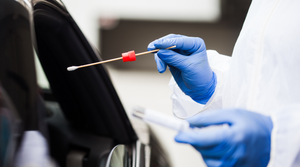The Global Medical Device Regulatory Environment
Despite uncertainty in the EU and a continued lack of transparency in some of the BRIC countries in 2013, medical device regulatory agencies are making significant strides in harmonization efforts.
November 27, 2013

By Stewart Eisenhart
Characterized by equal parts progress and setbacks, the global medical device regulatory environment in 2013 can perhaps best be summarized as a mixed bag.
Among the most positive developments for the global medical device industry this year were significant moves toward more harmonized regulatory systems in both top-tier and emerging markets, particularly in the Americas and Southeast Asia. Yet despite such progress, lagging economic conditions in Europe and an ongoing lack of transparency in major developing regions such as China, Russia, and Brazil have persisted and will likely continue to challenge manufacturers in 2014.
Stay up to date on global regulations by attending the FDA and Global Regulations in Practice conference track at MD&M West in Anaheim, CA, February 10–13, 2014. |
Europe: Changes (Still) Ahead
Proposed changes to Europe’s Medical Device Directives, while not expected to become law until 2017 at the earliest, have nonetheless commanded the attention of medical device manufacturers, as well as their notified body and European authorized representative partners, throughout 2013. Although new medical device legislation has been voted through the European Parliament, it now must be approved by 28 EU member states—not a small (nor speedy) feat.
Industry is already preparing, however, for some regulatory changes coming in the near term. Chief among such changes are EU Commission recommendations for unannounced quality system audits of medical device manufacturers and their suppliers by notified bodies. The notified body role in the European CE Marking process for medical devices has come under more intense regulatory scrutiny following the high-profile Poly Implant Prothèse (PIP) breast implant scandal that caused an uproar in multiple member states. As a result, medical device companies must be prepared to demonstrate their ISO 13485 compliance—as well as that of any third-party outsourcers or suppliers they use—at a moment’s notice.
Brazil: New BGMP Requirements
Brazilian medical device market regulator ANVISA announced changes to the country’s Brazilian Good Manufacturing Practice (BGMP) quality management system requirements in 2013. The impact of those changes in terms of BGMP certification and market authorization processes for medical device manufacturers remain to be seen, however.
In August, ANVISA issued RDC 39/2013. This resolution covers administrative processes for BGMP certification, including requiring BGMP compliance for each product line in instances where manufacturers produce more than one device in a single facility or establishment. If a company manufactures a medical device and an in vitro diagnostic (IVD) device in the same facility, for example, the company now has to pay two BGMP certification fees to cover each product.
A separate presidential decree, Decree No. 8077/2013, suggests that in the future, ANVISA may take a more selective approach in determining which medical devices require BGMP certification and which—if any—do not. Such a move could result in a faster path to market for lower-risk devices. But at this point, regulators have not provided enough details to clearly determine how Brazilian registrations would be affected. In the meantime, standard BGMP certification requirements remain in force.
Russia: Chaos and Reorganization
The Russian medical device market regulatory situation at the beginning of 2013 confounded more than a few industry observers and participants, owing to a rather chaotic rollout of reforms at the country’s market regulator, Roszdravnadzor.
Unresolved questions regarding new authorized representative requirements, “expertise centers” deciding whether clinical trials in Russia are necessary, and registration certificate renewals, followed by the sudden replacement of top Roszdravnadzor staff by Russian Federation officials last spring, all contributed to a backlog of new device approvals.
Following Roszdravnadzor’s abrupt reorganization, however, deadlines for reauthorizations of device registration certificates have been extended to January 2014 to January 2017, and regulators have begun work on a new electronic registration submission system. In addition, Roszdravnadzor is reportedly considering easing market authorizations for Class I low-risk devices and has proposed new guidelines for evaluation of IVD devices.
To be sure, Russia remains one of the most opaque and complicated medical device markets in the world. But developments in the latter half of 2013 are promising signs of greater transparency and predictability in the future.
China: New Clinical Trial, Adverse Event Reporting on the Horizon
The Chinese medical device regulatory system remains a highly complex one. During 2013, however, China Food and Drug Administration (CFDA) officials took some significant steps toward increasing transparency in terms of electronic validation, new approval pathways for innovative devices, and exemptions from China Compulsory Certification (CCC) Mark requirements.
CCC Mark certification, required for a broad range of products, including automotive, wireless products, and other consumer devices, had previously applied to some medical devices prior to 2013. In mid-2013, however, the CFDA eliminated CCC Mark certification for eight medical device categories. By the end of this year, the agency will have removed CCC Mark requirements for all medical devices.
The CFDA has also set up a new online system through which medical device registrants can request regulatory validation of their product classifications. Such requests previously had to be made in writing and often delayed the market authorization process as applicants had to wait for written replies.
Chief among the regulatory developments in the region, however, was Chinese regulators' newly proposed special approval pathway for innovative medical devices. Under this new approval pathway, qualifying medical device products would be given priority review status by CFDA. Qualifying medical devices must be manufactured in China as well as be the first of their kind to be registered in the country.
While China’s medical device registration system still presents challenges to foreign manufacturers, CFDA regulators seem to be making good-faith efforts to make the approval process more efficient. Hopefully, those efforts continue in 2014.
South Korea: Loosened KGMP Rules
Until 2013, registration of most medical devices with the South Korean Ministry of Food and Drug Safety (MFDS) required compliance with Korea Good Manufacturing Practice (KGMP). Over the course of the past year, however, the MFDS took a number of steps to simplify KGMP compliance for some manufacturers—and exempt some firms altogether from such requirements. As quality system compliance often proves among the most time-consuming and complex components of medical device registration, South Korean regulators’ moves to streamline KGMP compliance will no doubt boost manufacturers’ interest in the region.
For Class II and Class III medical devices, Korean regulators have allowed manufacturers to make greater use of third-party auditors to verify KGMP compliance in some instances. This change streamlines the auditing process for industry while freeing up resources at the MFDS to more effectively monitor devices with high-risk profiles.
For low-risk, Class I medical devices, the MFDS has waived KGMP requirements altogether. As of September 2013, Class I medical device manufacturers and their Korean license holders need only to electronically submit premarket notifications to the MFDS to begin commercialization in South Korea.
Looking Ahead: Harmonization to the Rescue?
Conditions in individual medical device markets will obviously vary in 2014, but international developments getting underway now stand a good chance of boosting greater harmonization of regulations in the Americas and Southeast Asia. Two initiatives intended to harmonize regulations across multiple markets warrant attention from companies seeking new commercialization opportunities.
First, 10 Southeast Asian governments—including Indonesia, Malaysia, and Singapore—are working under the Association of Southeast Asian Nations (ASEAN) economic bloc to launch a single, harmonized market authorization system for medical devices by 2015. Applying consistent medical device regulatory requirements across a market with a population of more than 600 million and more than $2 trillion in GDP will no doubt heavily boost interest from foreign manufacturers in Southeast Asia as the ASEAN Medical Device Directive comes into force.
Second, medical device regulators in the United States, Canada, Brazil, and Australia will launch a three-year pilot of the Medical Device Single Audit Program (MDSAP) in January 2014. Spurred by the International Medical Device Regulators Forum (IMDRF), the MDSAP is designed to enable market regulators to recognize quality management system (QMS) audits performed by other regulators participating in the program. Thus, once the pilot begins, the results of a manufacturer’s quality system audit in the United States will be recognized and accepted by Brazil’s ANVISA, the Australian Therapeutic Goods Administration, and Health Canada, obviating the need to undergo separate QMS audits in each of these markets. Quality system compliance is one of the most time-consuming and labor-intensive aspects of medical device registration; if the MDSAP pilot is successful and the program is adopted by other IMDRF member countries, manufacturers will ultimately face less onerous paths to market.
Stay up to date on global regulations by attending the FDA and Global Regulations in Practice conference track at MD&M West in Anaheim, CA, February 10–13, 2014. |
Stewart Eisenhart is senior regulatory analyst at Emergo Group, a medical device regulatory consultancy in Austin, TX.
[stock image courtesy of NOKHOOG_BUCHACHON/FREEDIGITALPHOTOS.NET]
About the Author(s)
You May Also Like


